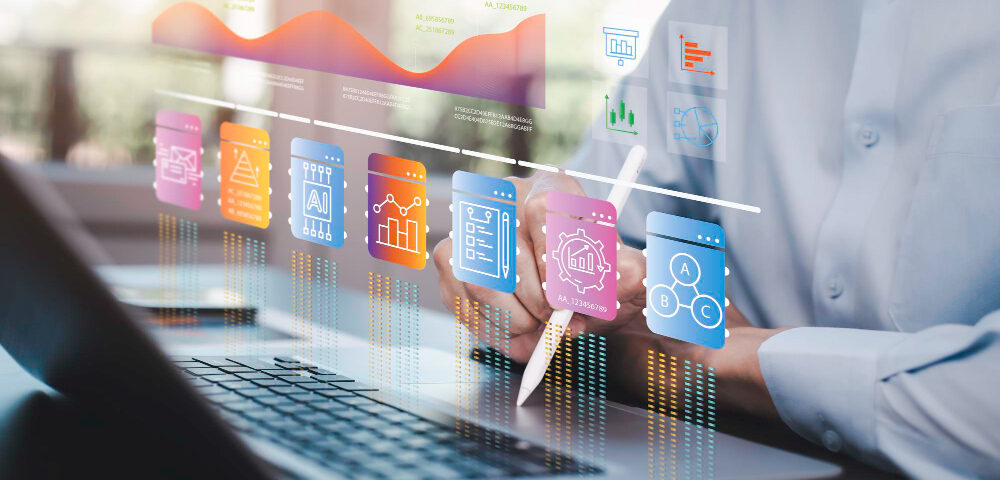
Contextual Targeting vs Behavioral Targeting: Which Wins in 2025?
March 18, 2025
Understanding Programmatic Identity Solutions in a Privacy-First Era
March 20, 2025
How CDPs (Customer Data Platforms) Are Boosting Programmatic Efficiency
Introduction
In the rapidly evolving world of digital advertising, Customer Data Platforms (CDPs) have emerged as game-changers—especially for brands leveraging programmatic advertising. As privacy regulations tighten, cookies phase out, and customer expectations rise, CDPs are helping marketers achieve greater efficiency, personalization, and ROI from their programmatic campaigns.
In this blog, we’ll explore how CDPs work, why they matter for programmatic advertising in 2025, and how they’re redefining the future of data-driven marketing.
What Is a Customer Data Platform?
A Customer Data Platform (CDP) is a unified, centralized database that collects and organizes first-party customer data from various sources—websites, mobile apps, CRM systems, e-commerce platforms, and more.
Unlike traditional CRMs or DMPs (Data Management Platforms), CDPs are designed for marketers and offer real-time access to unified customer profiles across touchpoints.
Core Functions of a CDP:
Data Unification: Combining siloed customer data into a single profile
Identity Resolution: Matching multiple identifiers (email, device ID, cookie) to one person
Segmentation: Creating audiences based on behavior, demographics, interests
Activation: Sending segmented data to DSPs, email platforms, social media, and more
Why CDPs Matter in Programmatic Advertising
In 2025, programmatic advertising is increasingly dependent on first-party data. As third-party cookies become obsolete and user consent becomes mandatory, CDPs provide a compliant and effective alternative for targeting.
Here’s how CDPs directly enhance programmatic efficiency:
1. Improved Audience Targeting
CDPs enable brands to create highly accurate audience segments based on real customer behavior, preferences, and lifecycle stage. When integrated with a DSP, these segments result in:
Higher match rates
Better CTR and conversion rates
Lower media wastage
2. Real-Time Data Activation
Unlike older systems that batch and upload data slowly, CDPs support real-time data flows. This means advertisers can:
React instantly to user actions
Serve contextually relevant ads across devices
Optimize bidding strategies on-the-fly
3. Unified View Across Channels
A CDP stitches together web, app, email, and offline interactions into one profile. This allows brands to:
Personalize ads based on omnichannel behavior
Avoid showing repetitive or irrelevant creatives
Attribute programmatic performance more accurately
4. Privacy-First Targeting
Since CDPs rely on consented first-party data, they help advertisers stay compliant with regulations like GDPR, CCPA, and global privacy frameworks. They also eliminate the dependency on unstable third-party cookies.
Real-World Use Cases of CDPs in Programmatic
Use Case 1: Retail Brand with High Cart Abandonment
A major e-commerce brand uses its CDP to track cart abandonment in real time. By syncing this segment with their programmatic platform, they can immediately retarget users with personalized offers—reducing abandonment rates and boosting conversions.
Use Case 2: Streaming Platform with Behavioral Segments
A streaming service leverages CDP data to segment users by viewing habits. Comedy lovers are shown ad creatives from relevant shows or partner brands via CTV programmatic inventory—leading to higher engagement and reduced churn.
CDP + AI = Predictive Programmatic Power
When paired with AI and machine learning, CDPs supercharge programmatic strategies by enabling:
Lookalike modeling based on high-value users
Churn prediction and proactive ad delivery
Personalized dynamic creative optimization (DCO) at scale
This predictive capability allows marketers to anticipate customer behavior, not just react to it.
Challenges to Consider
While CDPs offer tremendous value, brands must navigate a few challenges:
Data Integration Complexity: Connecting all systems (CRM, website, apps, etc.) can be time-consuming
Governance & Security: Ensuring clean, permission-based data is essential
Cost & Scalability: Some CDPs are better suited for enterprise-level organizations
Choosing the right CDP and aligning it with your marketing stack is key to success.
Future Outlook: CDPs as the Backbone of Programmatic
In 2025 and beyond, CDPs are becoming foundational to modern programmatic strategies. As media buyers prioritize data quality over data quantity, CDPs will be the main source of actionable, privacy-compliant customer intelligence.
Forward-thinking brands in North America and the MENA region are already adopting CDPs to:
Build owned data ecosystems
Enable hyper-personalized programmatic ads
Navigate privacy changes confidently
Conclusion
As programmatic advertising evolves in the face of privacy laws and cookie deprecation, CDPs are proving essential for marketers who want to maintain precision, efficiency, and personalization.
By turning fragmented first-party data into unified customer insights, CDPs help brands reach the right person, on the right channel, with the right message—at the right time.
If you’re not using a CDP to fuel your programmatic strategy in 2025, you’re already behind.
Meta Description:
Discover how Customer Data Platforms (CDPs) are revolutionizing programmatic advertising in 2025. Learn how CDPs drive better targeting, personalization, and ROI.
SEO Keywords:
Customer Data Platforms, CDP and programmatic, first-party data targeting, real-time ad personalization, CDP advertising use cases, programmatic efficiency 2025

